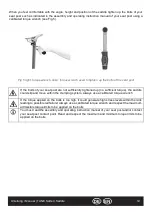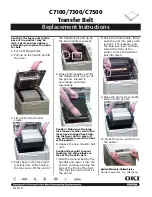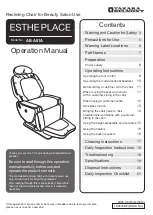
Anleitung / Manual | TUNE Sattel / Saddle
15
Field of use
Carbon Material‘s specificities
After any unforeseen overload, the structure of the saddle may be broken without any external
visible damage of deformation, or if you see a crack or hear a cracking noise stop immediately
using the saddle and contact us.
Contact Information page 22
Note that this saddle must be used on mountain and racing bikes only for amateur normal usage
and cannot be used on specialised types of bicycles such as tandems or bicycles designed and
equipped for use in severe applications
This saddle has been designed and tested according to the norms EN 14’766:2005(e) and EN
14’786:2005(e) respectively defining the safety requirements and test methods for Mountain bikes which
apply for off-road and rough-terrain use, and for Racing bikes intended for high-speed amateur use on
public roads, in both cases it applies to bicycles on which the saddle can be adjusted to provide a
minimum saddle height of 635 mm.
It does not apply to specialised types of bicycles such as tandems or bicycles designed and equipped for
use in severe applications such as sanctioned competition events, stunting, or aerobatic manoeuvres.
It does not apply to bicycles with a saddle height of ≤ 435 mm and with a maximum saddle height of more
than 435 mm and less than 635 mm.
Even if carbon material (Carbon Fibre Reinforced Thermoplastic to be more precise) is the best
compromise between lightweight and strength, a carbon saddle submitted to unforeseen overload
(misuse, crash…) could not show any plastic deformation or any crack or failure unlike what is known for
polymeric and metallic parts. If the saddle is submitted to an unforeseen overload please contact us (page
22) to perform the needed inspection.








































